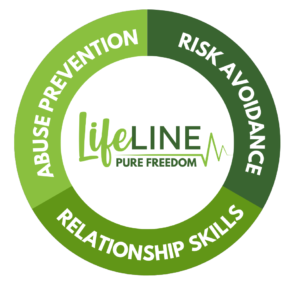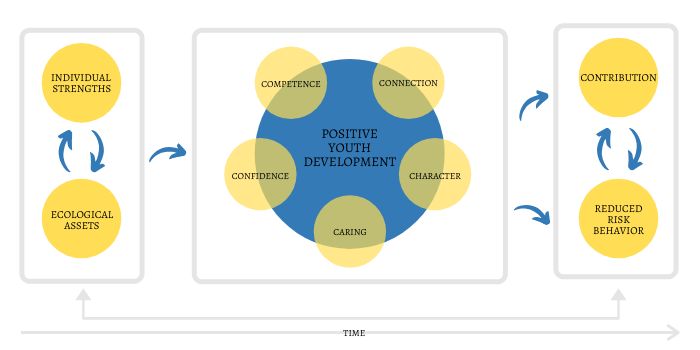Our Approach
Our Vision:
Utilizing a community saturation approach working with schools, students, parents, and community professionals, Pure Freedom will empower youth in Northeast Missouri to avoid sexual risk.

Risk Avoidance
As a parent, as a teacher, you have the right to demand the best sex education for your children or for your students. Today, there are two types of sex education commonly being taught in schools:
- SRA, or “Sexual Risk Avoidance”, such as the Pure Freedom program.
- SRR, or “Sexual Risk Reduction”, also referred to as “Comprehensive Sex Education” (CSE)
Between the two, SRA has consistently proved to be the most effective approach in maximizing teens’ physical and emotional health.
SRA goes beyond sexual activity as it adopts a holistic sex education approach. While its curriculum includes medical facts about anatomy, contraception, and STDs, it also focuses greatly on relationships. Teenagers receive information on subjects such as how to distinguish healthy relationships from toxic ones, consent, and self-image. All materials are age-appropriate and we encourage parents to participate in their students’ education. You can find more about the content of the Pure Freedom program right here.
In a nutshell, SRA is based on the following considerations:
- Sex is a wonderful thing but teen sex is a risk behavior that can take a toll on a youth’s physiological, emotional, and academic life.
- Teenagers are more than capable to understand those risks and to delay sexual initiation when given the right tools and information.
Primary Prevention
Sexual Risk Avoidance (SRA) Education’s aim is to help youth thrive and stay safe. Sexual Risk Avoidance mirrors other public health models such as drug, alcohol, and smoking prevention education. In primary prevention public health models, the main focus is to eliminate the risk behavior and the negative outcomes that stem from it. To do so, students are told to stay away from unhealthy behaviors completely, and not just to use caution. Although the Sexual Risk Avoidance approach focuses on primary prevention, it recognizes some students might need intervention strategies, such as testing and treatment, and includes elements that seek to help those students as well.
The Effectiveness of Sexual Risk Avoidance
SRA works. Research has systematically shown that it is the best approach when it comes to protecting youth from the negatives consequences of risky sex. A corpus of 25 peer-reviewed studies concluded that teenagers who attended SRA programs instead of SRR programs were:
- Much more likely to delay sexual initiation,
- If sexually active, much more likely to discontinue or decrease their sexual activity,
- No less likely to use a condom if they initiate sex,
- More likely to excel academically,
- Less likely to engage in other risky behaviors.
In comparison, 80% of the teenagers who were only taught Sexual Risk Reduction were found to fare worse or no better, meaning that they were more vulnerable to unplanned pregnancies and STDs due to an earlier sexual initiation.
Relationship Skills
The Pure Freedom program model also focuses on relationship skill building. Students learn information on subjects such as how to distinguish healthy relationships from toxic ones, understand consent, and recognize self-worth. Our certified educators believe youth are capable of making healthy decisions when given the information to do so, such as delaying sexual initiation and treating others with respect.

Pure Freedom uses the evidence-based Real Essentials curriculum from the Center for Relationship Education. It was built on five theoretical frameworks, national health education standards, and research on healthy relationships. This curriculum is activity-based, meaning that students are actively engaged in learning activities that make the experience both fun and memorable. Each educator is certified in the curriculum model.
Abuse Prevention
The Pure Freedom program approaches abuse prevention in two ways. The first is helping students to recognize abuse and providing a safe space for students to disclose events of abuse that have occurred to receive support. The second is proactive, providing education to all students to prevent abuse before it occurs. This includes education that addresses root causes for abuse perpetration, debunking media and cultural myths that normalize abusive behaviors, and discussions that actively deconstruct attitudes and beliefs that lead to intimate partner violence.
Pure Freedom approaches sensitive topics with a trauma-informed perspective, responding to those who have experienced or may be at risk for experiencing trauma. The trauma-informed approach of the curriculum includes realizing the widespread impact of trauma, recognizing the signs and symptoms in youth, families, staff, and others, and facilitating potential paths for recovery. The program responds by fully integrating knowledge about trauma into policies, procedures, and practices, seeking to actively resist re-traumatization. All program educators are certified in trauma-informed classroom instruction.

Pure Freedom also recognizes the importance of building a supportive community for youth. Pure Freedom educators are licensed facilitators for the Darkness to Light: Stewards of Children Sexual Abuse Prevention training. We offer workshops free of charge for parents, teachers, and community members in Northeast Missouri.
Positive Youth Development
What is it?
Positive Youth Development is an approach that suits the youth’s needs and psychology. Several youth programs and organizations such as Pure Freedom use it to serve youth and promote healthy youth development.
But how does it work?
While it is true that we cannot predict someone’s life outcome with certainty (due to a high number of variables, developmental plasticity and the individual’s own personality), there are certain “protective factors” that can help young people to succeed and stay away from trouble. In general, three elements can really make a difference. These are:
- Experiences
- Relationships
- Environments
And to help youth pursue these essentials, we can use Positive Youth Development. As an intentional, prosocial approach, it revolves around recognizing, providing and engaging. It:
- Recognizes youth’s strengths as well as their vulnerabilities and the frequent pressures they face.
- Provides them with not only the right resources but also with support and opportunities, while fostering positive relationships.
- Engages youth in all settings, including their families, communities, schools, and peer-groups.
By doing so, it seeks to foster positive attributes in youth, which in turn will help them pursue the best outcomes for their lives.
The Features of Positive Youth Development
These attributes are called “the 5 C’s” of Positive Youth Development:
- Competence: in areas such as social settings and academics,
- Confidence: in oneself and a feeling of self-worth,
- Connection: forming positive relationships,
- Character: which includes a sense of right and wrong, integrity and the respect of rules,
- Caring: a sense of sympathy and empathy towards others.
As teenagers progress in those five areas, they not only become more likely to avoid risky behavior, they are also more likely to positively contribute to society.
The good news is that contrary to previous assumptions, teenagers have control over their behaviors. Early researchers saw them as inherently at risk of developing unhealthy behaviors, but we know now that they have great potential for learning and for change, mostly because of the high plasticity of their brains. The environment alone cannot predict someone’s life trajectory either. Instead, individual strengths, environment, and the 5 C’s all influence youth’s outcomes.

Reproduced from the 4-H Study of Positive Youth Development
Researchers have evaluated many programs using the approach and the results were positive. “Youth were found to be at much lower risk of having personal, social and behavioral problems than other youth. They were less likely to smoke and drink than their peers, had better grades and were more likely to expect to attend college.” Pure Freedom is one of these programs.
Pure Freedom and Positive Youth Development
As a Sexual Risk Avoidance program, Pure Freedom applies the Positive Youth Development Framework daily and effectively. We:
- Recognize that each teenager has their own sets of unique characteristics, strengths, and vulnerabilities. Because we are aware that they encounter a lot of conflicting information and pressures from society in regards to relationships, love, and sex, we are committed to staying up to date on the latest research and cultural trends.
- Provide teenagers with clear, scientific, and evidence-based information on all things related to healthy friendships and love relationships, STDs, pregnancy, and more. We do not use scare tactics as we know they can be ineffective (especially due to the fact that the teenage brain retains positive information better) but they can also backfire. We give them the opportunity to think critically about each subject as well as the support they need for skill-building.
- Encourage engagement both in class and at home with their parents. Our goal is for them to recognize their immense value, boost their confidence, and feel like they belong. Our educators are always open to answering any questions without taboo or judgment.